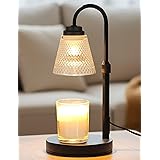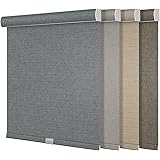Have you ever dreamed of a fully functional kitchen that you can take anywhere, whether it’s deep in the wilderness or set up on a job site? The concept of a DIY tiny kitchen is quickly gaining traction among outdoor enthusiasts, tiny home dwellers, and anyone needing a portable cooking solution. The video above beautifully demonstrates how to construct a robust and versatile DIY tiny kitchen, designed to be both indoor and outdoor capable. This ingenious setup transforms a basic sawhorse into a highly adaptable workstation, complete with a sink, water supply, and cooking area. Imagine whipping up delicious meals with farm-fresh ingredients, no matter how remote your location might be.
This article will delve deeper into the construction details and practical considerations for building your own portable kitchen, expanding on the concepts introduced in the video. We will explore the materials, tools, and design principles that make this project so effective, ensuring you have all the information needed to create your perfect camping kitchen setup. From countertop durability to clever water management, every aspect of this mobile culinary station is crafted for convenience and efficiency. Get ready to elevate your outdoor cooking experience or enhance your temporary living situations with this remarkable project.
Crafting the Durable Countertop for Your Portable Kitchen
1. The foundation of any reliable kitchen, especially a DIY tiny kitchen destined for outdoor adventures, begins with a robust countertop. As demonstrated in the video, two pieces of 3/4-inch thick plywood, each measuring 74 inches long and 19 inches wide, are meticulously glued together. This lamination process creates an impressively thick 1 1/2-inch countertop, offering superior durability and stability. The extra thickness helps prevent warping and provides a solid base for all your culinary activities, from chopping vegetables to supporting a sink.
Once the glue cures, the edges often require some refinement. A belt sander effectively flattens any uneven seams, ensuring a seamless and professional finish. Next, an orbital sander with 120-grit pads rounds over the sharp, square edges, which not only enhances safety but also provides a more comfortable and aesthetically pleasing surface. This attention to detail in the sanding process is crucial for both functionality and appearance. Finally, three coats of Minwax Polyacrylic, applied with a foam brush, seal the plywood entirely. This protective layer is vital for safeguarding the countertop against moisture, spills, and the rigors of outdoor use, making it ideal for a camping kitchen environment.
Integrating the Sink and Water System into Your Tiny Kitchen
2. A true DIY tiny kitchen isn’t complete without running water, even if it’s a simplified version. The video highlights the installation of a top-mounting stainless steel sink from Moen, for which a precise hole is cut into the plywood using a jigsaw. Stainless steel is an excellent choice for a portable setup due to its rust resistance, ease of cleaning, and durability against impacts and temperature changes. It withstands the challenges of outdoor exposure far better than other materials, ensuring longevity for your outdoor kitchen.
The ingenuity truly shines with the water supply system. Utilizing a 5-gallon water jug as the reservoir, a specialized dolphin pump is adapted to draw water. The pump, originally designed for direct jug mounting, is extended with a piece of PEX tubing to reach through the sink hole. To ensure the pump’s intake extends deep enough into the jug, a section of PVC pipe is used to extend the jug’s neck, secured with a rubber coupling and two hose clamps. This entire assembly fits neatly under the sink, providing a compact and efficient water source for washing hands or rinsing dishes. This innovative solution ensures your off-grid kitchen remains highly functional.
Essential Drainage and Soap Dispenser Additions
Beyond the fresh water supply, managing wastewater efficiently is paramount for any mobile kitchen. A standard vanity sink drain from Home Depot is screwed directly into the sink, channeling used water effectively. The video wisely points out that the standard drain often needs an extension to safely direct water into a collection bucket. A short piece of vinyl hose is easily attached to extend the drain, preventing spills and keeping your cooking area clean and tidy. This thoughtful addition ensures proper gray water management, which is critical for minimizing environmental impact, especially in natural settings.
Furthermore, convenience is key when you’re away from traditional amenities. The second pre-drilled hole in the sink, typically for a sprayer, is repurposed for a soap dispenser. This is an incredibly practical idea for a portable kitchen, providing instant access to hand sanitizer or liquid soap. When camping or working in the field, maintaining hygiene is crucial, and having hand sanitizer readily available allows for quick clean-ups, protecting against germs and cross-contamination. This small detail significantly enhances the functionality and overall usability of the setup.
Building the Portable Sawhorse Stand for Your DIY Tiny Kitchen
3. The true genius of this DIY tiny kitchen lies in its highly portable and adjustable stand: a heavy-duty folding metal sawhorse. The video demonstrates using 1 1/2-inch aluminum angle pieces, cut into 7-inch long brackets, to secure the countertop to the sawhorse. Aluminum is chosen for its lightweight yet strong properties, making it ideal for a compact kitchen where weight is a consideration. These brackets allow the countertop to be quickly attached and detached, making the entire unit easy to transport and set up.
Precision is key when drilling the mounting holes. While screws for the underside of the countertop can be placed almost anywhere, the holes through the sawhorse and brackets must be perfectly aligned. The folding metal sawhorse, known for its compact storage and robust steel construction, is positioned centrally under the countertop. Markings are made for the drilling locations, and pilot holes are drilled into the steel sawhorse before using a larger bit suitable for a quarter-inch bolt. This bolting mechanism ensures a secure connection, preventing any wobble or instability during use. The adjustable legs of the sawhorse also offer a distinct advantage, allowing users to customize the working height and even create space for a mini-fridge underneath, adding valuable storage to your camping kitchen.
Powering Your Portable Cooking: Appliances and Options
4. No DIY tiny kitchen is complete without cooking capability, and the video presents flexible options for various scenarios. For situations where electricity is available, such as indoors or with a generator, a single burner hot plate is an excellent choice. These electric cooktops offer precise temperature control and are generally safe for indoor use, avoiding the fumes associated with gas. They are perfect for preparing simple meals, heating water, or cooking small portions, making them a versatile addition to any small space living setup.
Conversely, for truly off-grid kitchen adventures or when power is scarce, a Coleman propane stove is recommended. Propane stoves are beloved by campers for their portability, instant heat, and ability to cook efficiently without electricity. The video mentions this as the likely choice for job site cooking or deep wilderness excursions, highlighting the importance of having versatile power solutions. Hooks pre-drilled and screwed into the underside of the counter provide convenient hanging storage for pots, pans, and dish rags, keeping essentials within easy reach and further optimizing space in your mobile kitchen.
Enhancing Your Camping Kitchen Experience with Meal Kits
5. Beyond the core build, optimizing the cooking experience is paramount, especially when space and resources are limited. The video touches upon meal kit services like Blue Apron as a game-changer for a DIY tiny kitchen, particularly in outdoor or temporary settings. These services deliver farm-fresh ingredients in exact proportions, eliminating the need for grocery runs and minimizing food waste – a critical benefit for a camping kitchen where storage is at a premium. With eight recipes to choose from weekly, and plans for two or more people, they offer variety and convenience.
One of the significant advantages highlighted is the insulated packaging, which keeps ingredients fresh, even in transit to a remote location like a campsite or Burning Man. With meals ranging from 500-800 calories per person and starting as low as $9.99 per serving, they provide a cost-effective and healthy alternative to traditional camp food. The easy-to-follow recipe cards are another plus, ensuring even novice cooks can create delicious meals, as demonstrated by the 26-minute beef stew preparation time. This makes gourmet cooking achievable anywhere, turning your portable kitchen into a culinary hub.
Versatility: Beyond the Campsite for Your Portable Kitchen
6. While the video primarily showcases this as a DIY tiny kitchen for camping, its design boasts incredible versatility for numerous other applications. The rapid setup time, taking less than five minutes, makes it invaluable for job sites where access to amenities is limited. Construction crews building a tiny house out of shipping containers, as mentioned in the video, would find this portable unit indispensable for on-site meal preparation and hydration. It offers a cleaner, more organized alternative to makeshift setups, enhancing efficiency and worker comfort.
Moreover, this compact kitchen proves its worth indoors as well. Imagine filming in a large warehouse or a photo studio that lacks kitchen facilities; this portable solution provides immediate access to a sink and cooking surface. Its ability to be easily loaded into the back of a car or truck means a functional kitchen can literally go wherever you need it. This adaptability underscores the thoughtful engineering behind the design, ensuring that your investment in a portable kitchen serves a multitude of purposes, from recreational to professional.











